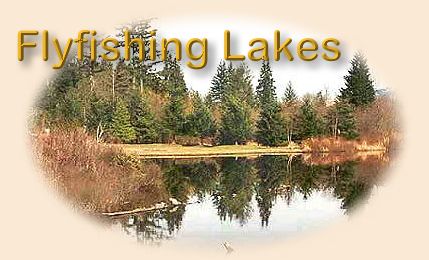|
Both the adult damsel and the nymph are slender
and good fly patterns should reflect this
characteristic. Kaufmann's Marabou Damsel is
a perfect example of what a damsel pattern should
be. Its spartan design has duped many trout. Thinly
dubbed or wound marabou bodies work best. Andy
Burk's unique combination of Vernille and marabou
is another consideration. The other challenge
facing the fly tier is imitating the sinusoidal
swimming motion of the nymph. I have tried various
wiggle nymph patterns but have had my best success
with patterns using soft materials such as marabou
and aftershaft feathers. Marabou tails on damsel
nymph patterns should be long and sparse. Short,
bushy marabou tails pulse when retrieved while a
long sparse tail will sway back and forth imitating
the sculling nymph. Aftershaft feathers make wonderful
thoraxes. Both marabou and aftershaft feathers come
to life in the water, moving and breathing on their
own. Flies incorporating these materials often result
in takes on the drop. Patterns taken in this fashion
have always impressed me. For the wingcase on damselfly
nymphs, any of the traditional materials work. Personal
favorites include mottled turkey quills and raffia.
Use of a flexible adhesive such as Dave's Flexament
adds durability to the quills while the mottled effect
of the turkey quill adds realism. Soft-hackle feathers
such as partridge, grouse or hen saddle makes wonderful
legs on damselfly nymphs. The variegated look of these
feathers provides a convincing look to any pattern.
Arguably the most imitated feature of the damsel nymph
is its prominent eyes. While not always necessary for
success, eyes on a pattern can be a source of confidence
for the fly fisher. On those tough days, confidence in
a pattern spells the difference between casting practice
and catching fish. There is a host of materials suitable
for eyes on nymphs. Some favorites include melted
monofilament, knotted Vernille, glass beads and round
foam. Any of these materials are interchangeable depending
upon the mood and preference of the fly tier.
To imitate the adults, the considerations are similar
to those of the nymph. I prefer svelte, delicate patterns.
Tiers previously used dyed deer hair or bucktail for
their adult patterns. Then Gary Borger got us thinking
in new directions with his creative use of braided
butt material. Now foam is one of the most popular
materials in use today. Rainy's Flies and Supplies
and others offer a full range of round foam developed
specifically for damsel patterns. Use the smallest
diameter foam available. A black permanent marker
provides the familiar banding. To imitate the wings,
try a large parachute hackle. I fashion wings using
pearlescent sheet material to create my own shimmering
wings. Remember, tie them in a swept back position to
imitate the drowned adults. Like the nymphs many tiers
imitate the eyes. One of my favorite eye materials
is black round foam. It provides added realism while
aiding the overall floatation of the pattern. ~ PR
More on insects for lakes from Phil Rowley's excellent book,
Fly Patterns for Stillwaters next time.
Credits: Excerpt from Fly Patterns
for Stillwaters By Philip Rowley, published
by Frank Amato Publications. We appreciate use
permission.
|

